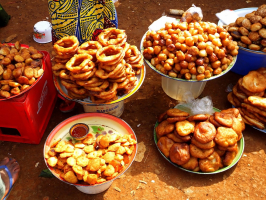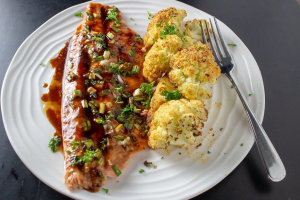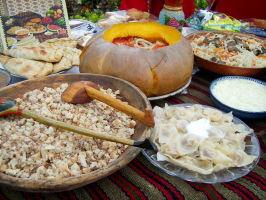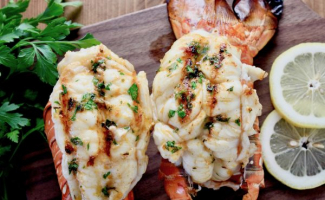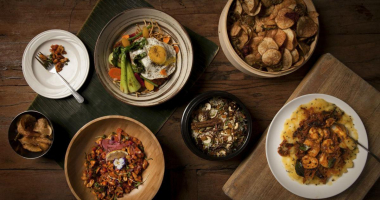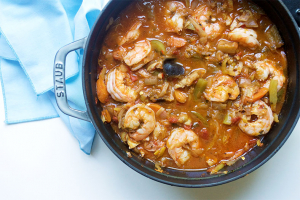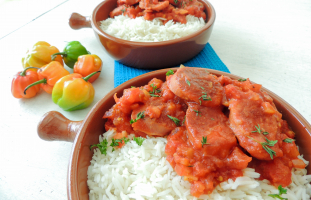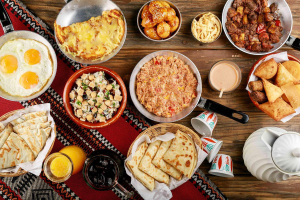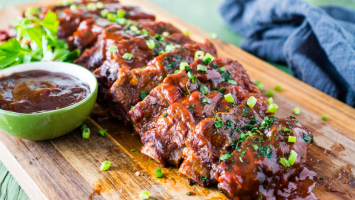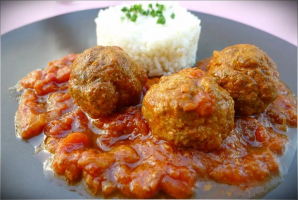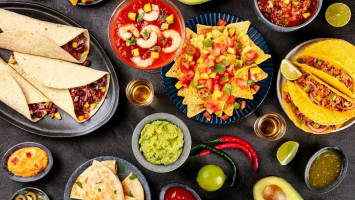Top 4 Best Foods In Burkina Faso
Burkinabé cuisine is specific to West Africa, with staple foods consisting of sorghum, millet, rice, corn, nuts, potatoes, and yams. Lamb, beef, and fish are ... read more...common ingredients, while vegetables are an understandable European dish, with tomatoes, carrots, onions, and spinach being the staples of the cuisine. In the countryside, meat is often replaced with fish or boiled eggs. Unexpectedly, Burkina Faso is known for its delicious local strawberries. A variety of banana varieties play an important role in savory and sweet dishes. Mangoes, papayas, and coconuts (often sold for water, not meat) are readily available on the streets of even the smallest towns. Here are the dishes that you must try when you visit Burkina Faso.
-
Riz gras, the French term for fatty rice, is the national dish of Burkina Faso, consisting of steamed rice, ketchup, and vegetables such as eggplant, carrots, onions, peppers, and garlic that are boiled together in thick rice. Stew and serve with a few strands of raw onion on top.
If meat is used in the dish, it will turn brown at the start of the cooking process. Peanut oil is used heavily in the production of riz gras, hence its name. While the dish isn't flashy, it's the perfect comfort food - protein, carbohydrates, and veggies all in one dish.
Fatty rice is not a type of rice but rather a term that denotes the amount of oil present in the dish, and there is a lot of oil used to make riz gras. Burkina Faso is an African country that is very prone to drought and famine, so the people survive on what they can grow themselves, consuming foods like rice, beans, and peanuts.
Ingredients:
2 habanero peppers
3 garlic cloves1/2 onion, finely chopped
4 tomatoes, chopped
1/2 cup oil
1 lb beef or 1 lb chicken, cubed
4 tablespoons tomato paste
4 1/4 cups water
1 Maggi seasoning, cube (or chicken bouillon)
2 1/2 cups long-grain white rice
salt and pepperDirections:
Place the habaneros, garlic, tomato, and onion in a food processor and blend until you have a smooth paste. Then, heat the oil over medium heat and pour the mixture into the pan. Cook for 8 minutes, then remove from heat and set aside.
Use a little water (about 1/2 to 1 cup) to rinse the blender, then place the water in a separate pot along with the meat. Bring the meat and water to a boil and then reduce the heat to low. Simmer for 15 minutes.
Put the meat in the pan with the mixture. Add ketchup, water, and Maggi cubes. Stir.
Wash the rice until the water is clear. Then put it in a pot to boil. Reduce heat, cover, and let simmer for 15 minutes. Check it, then cook for another 10 minutes or until the water has been absorbed.
Garnish with thinly sliced onion.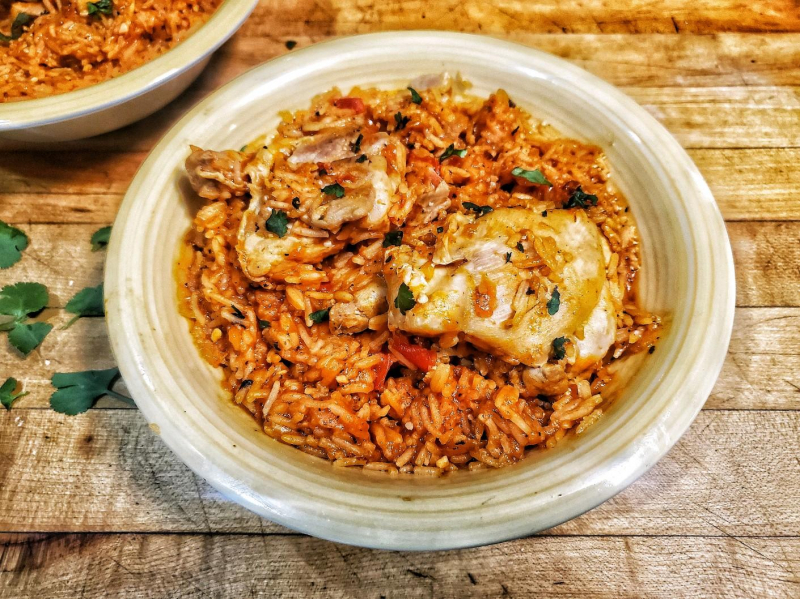
Riz gras. Photo: athomeworldtraveler.com 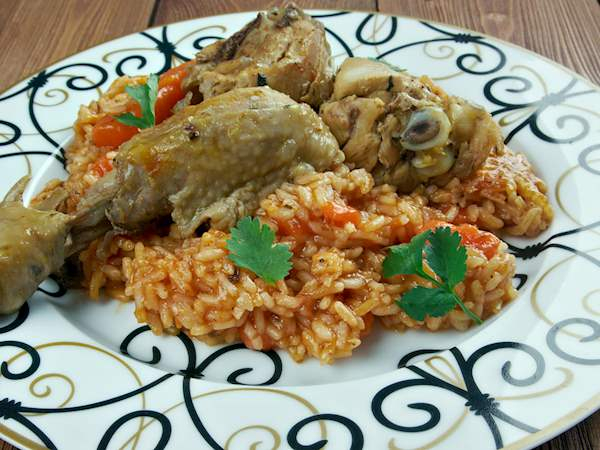
Riz gras. Photo: tasteatlas.com -
If you like the taste of blue cheese, dried fish, smoked fish, and bitter vegetables, then Babenda is for you!
Babenda is a popular one-pot dish in Burkina Faso based on bitter vegetables such as spinach, kale, collard greens, or Swiss chard. The thing that makes this dish quite interesting is the addition of fermented grasshopper beans, known as dawadawa or soumbala, which give it a pungent flavor reminiscent of blue cheese.
Soumbala is additionally mashed with smoked or dried fish to add some protein to the dish. The entire recipe is often combined with rice to create babenda, a homogenous mass of bittersweet, soursop, rice, and fish. Dried fish is available in Burkina Faso, including dried sardines and anchovies. They add protein and a rich, rich flavor to foods.
Any bitter green vegetable can be used for Babenda, including spinach, kale, Swiss chard, or mustard greens. Of these, the Swiss chard is the lightest. If you're using a more bitter green (like kale), Burkinabe traditionally adds a dash of potash (or baking soda) to soften the flavor.
Babenda is like a jazz orchestra, creating wild flavor sensations and pungent high notes that linger around suddenly through your mouth.
Ingredients:
450 g spinach
50 g sorrel
2 tbsp peanut oil
1 West Indian pepper (scotch bonnet)
1 vegetable stock cube
50 roasted peanuts
160 g rice (preferably broken)
tsp Salt to tasteDirections:
Wash the sorrel and spinach leaves thoroughly. Pour two tablespoons of peanut oil into the pan and melt the tamarind over low heat while stirring. Once the sorrel is melted, add the spinach leaves and do the same. When the spinach leaves are also melted, add the rice.

Babenda. Photo: tasteatlas.com 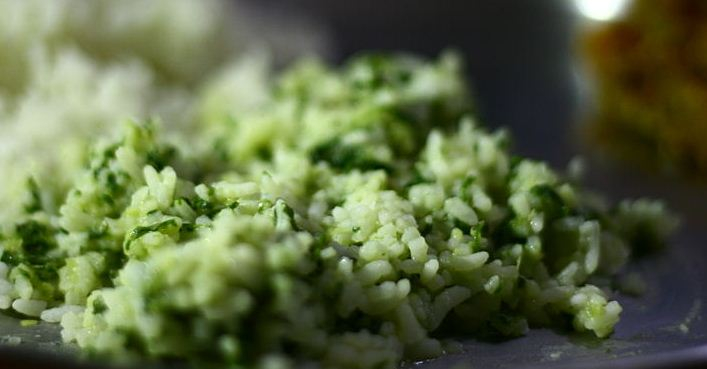
Babenda. Photo: afrogistmedia.com -
Ragout d'igname is a yam stew prevalent in most West Africa, especially Burkina Faso. The main ingredients used in the dish are yams, garlic, ginger, onions, carrots, peppers, and tomatoes. This casserole-like dish is typically seasoned with just salt and pepper. When the yams are tender, the sauce thickens, the ragout d'igname is ready to go, preferably hot.
In West Africa, yams are essentially larger than taro or sweet potatoes. The skin is firmer and darker, like bark, and the flesh is white. It is typically eaten boiled, fried, or roasted.
It was one of the easiest, fastest, and most delicious dishes. You can find every single ingredient at the grocery store, and anyone should be able to make it. The food is very fresh, made without processing. It just makes you feel good while eating.
It is also a dish that can be made vegan or vegetarian VERY easily! Just get rid of the beef stew and replace the beef stock with vegetable stock. Much of the flavor comes from fresh veggies. It's going to be delicious!
Ingredients:
1 medium-sized yam (peeled and cubed)
1 pound beef stew meat (chuck roast or other large cuts of meat from the shoulder or rear)
1 medium onion (diced)
3-4 medium-sized tomatoes (diced)
3 cloves garlic (minced)
1 beef bouillon cube
2 cups beef broth
1/4 cup olive or cooking oil
1 teaspoon saltDirections:
Heat the garlic, onion, and beef in the oil in a large skillet until the meat is fully cooked. Add tomatoes, chips, and salt and simmer for 5 minutes. Add 2 cups broth and bring to a boil. Add yams and cook for 15 minutes or until tender. Stir often and add water or broth if needed. Serve hot.
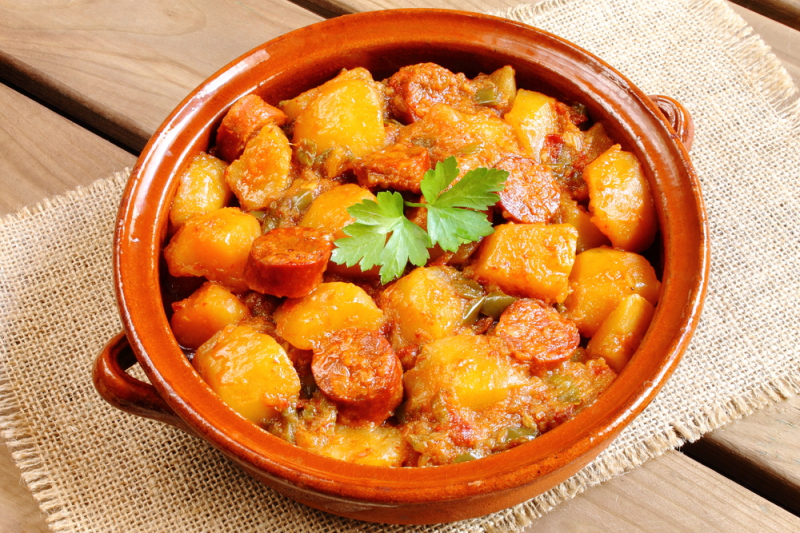
Ragout d'igname. Photo: linfodrome.com 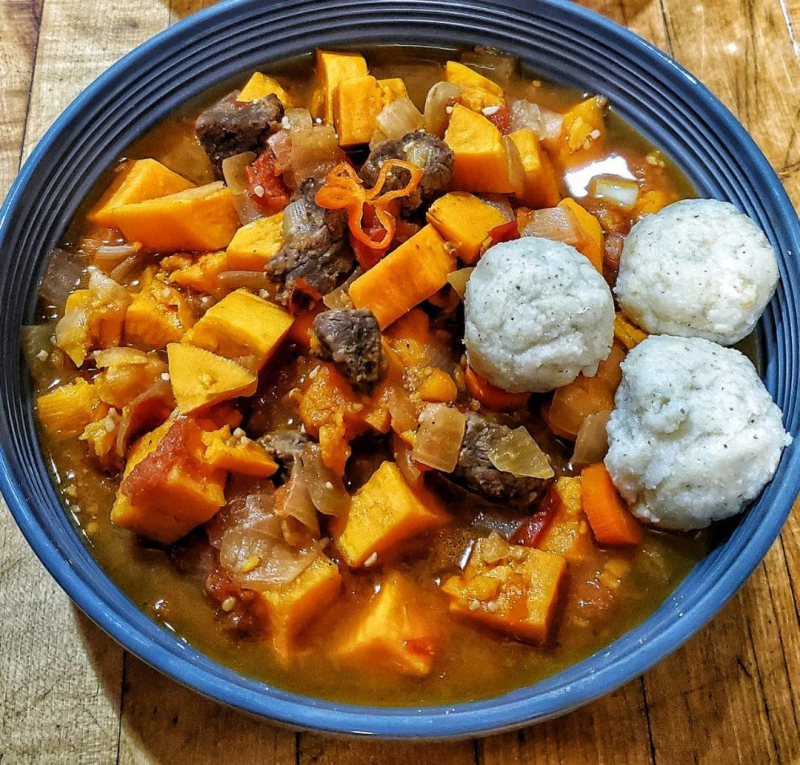
Ragout d'igname. Photo: thomeworldtraveler.com -
Tô or saghbo is an ugali-like dish made from a paste consisting of cooked millet, corn, or sorghum that is vigorously stirred until formed into a smooth paste. It is served with various stews and sauces made with meat or vegetables.
The dish is often paired with okra sauce, made by slowly simmering okra in water with seasonings such as salt and pepper. Tô should never be eaten on its own, and it will always accompany soup, stew, or sauce.
I think you should combine it with Ragout d'Igname for a great and authentic Burkinabé dinner.
The most traditional grain to use for this recipe would be sorghum flour. You can also use cornmeal or millet. With just three ingredients, it's quick, easy, and perfect for dipping into sauces or soups!
Ingredients:
4 cups water
½ lb. millet flour or cornmeal, divided
2 tbsp. butter or margarineDirections:
Bring water to a boil in a large pot over high heat. Slowly add about 1/4 of the flour or cornmeal. Stir quickly and continuously for about 5 minutes to avoid lumps.
Hypothermia. Use a large spoon to scoop out about 1/4 of the mixture and set it aside in a bowl.
Add the remaining flour or cornmeal to the pot. Stir vigorously each time you add it. Stir in the butter. If the mixture becomes too thick to stir, add some of the already set aside. After about 5 minutes of adding flour, the smooth paste will be too thick to stir.
Reduce heat to very low. Cover and cook for another 10 minutes.
Remove the pot from the heat. Shape the dough into balls, sprinkle with salt to taste, and serve with stews, sauces, or soups.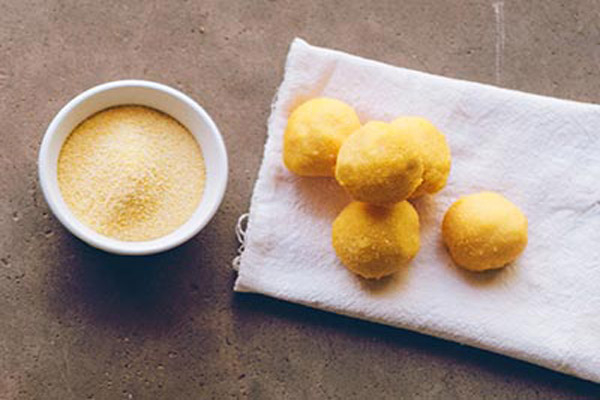
Tô. Photo: compassion.com 
Tô. Photo: athomeworldtraveler.com










